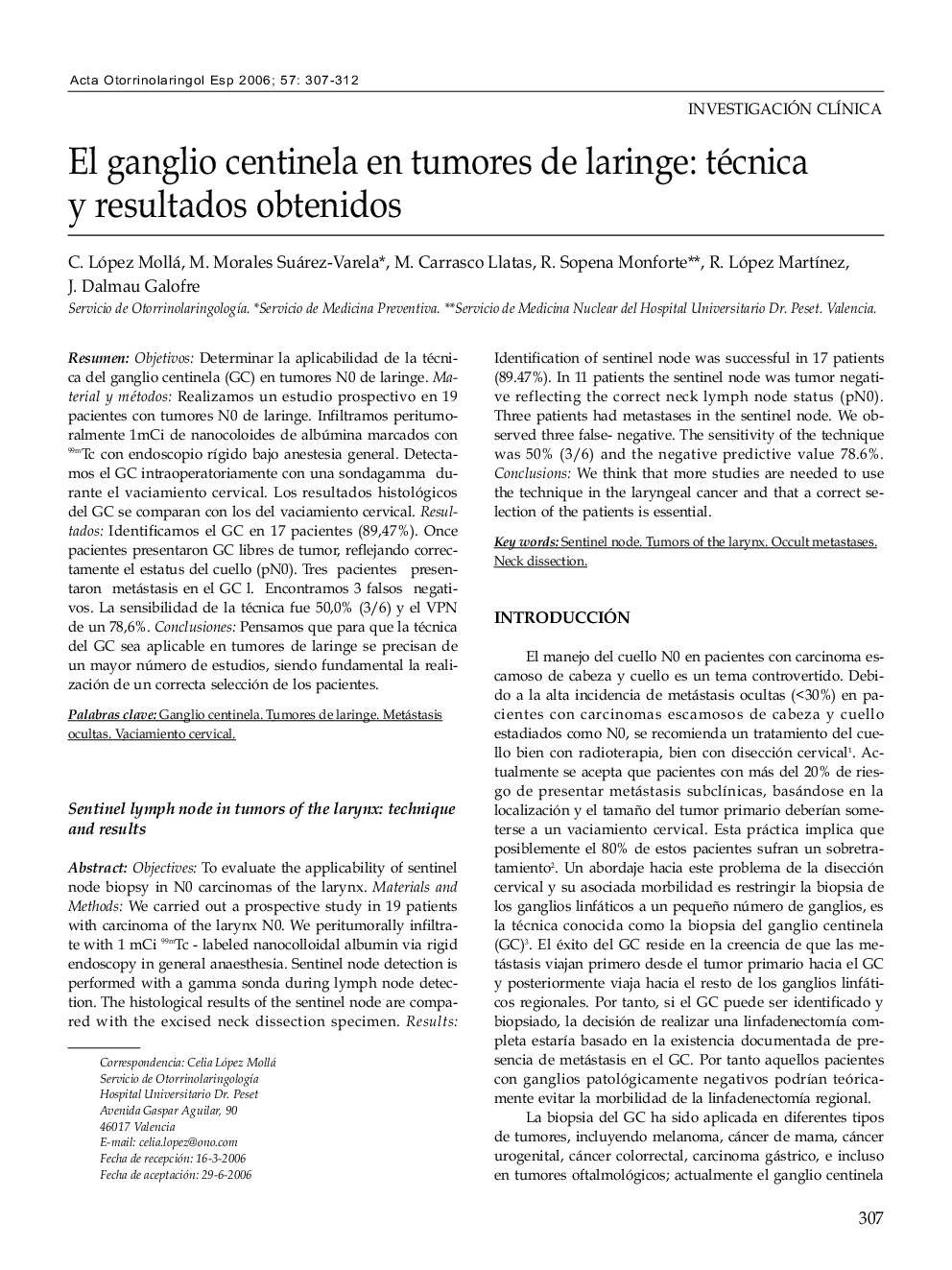| Article ID | Journal | Published Year | Pages | File Type |
|---|---|---|---|---|
| 4102850 | Acta Otorrinolaringológica Española | 2006 | 6 Pages |
ResumenObjetivosDeterminar la aplicabilidad de la técnica del ganglio centinela (GC) en tumores N0 de laringe.Material y métodosRealizamos un estudio prospectivo en 19 pacientes con tumores N0 de laringe. Infiltramos peritumoralmente 1mCi de nanocoloides de albúmina marcados con 99mTc con endoscopio rígido bajo anestesia general. Detectamos el GC intraoperatoriamente con una sondagamma durante el vaciamiento cervical. Los resultados histológicos del GC se comparan con los del vaciamiento cervical.ResultadosIdentificamos el GC en 17 pacientes (89,47%). Once pacientes presentaron GC libres de tumor, reflejando correctamente el estatus del cuello (pN0). Tres pacientes presentaron metástasis en el GC l. Encontramos 3 falsos negativos. La sensibilidad de la técnica fue 50,0% (3/6) y el VPN de un 78,6%.ConclusionesPensamos que para que la técnica del GC sea aplicable en tumores de laringe se precisan de un mayor número de estudios, siendo fundamental la realización de un correcta selección de los pacientes.
ObjectivesTo evaluate the applicability of sentinel node biopsy in N0 carcinomas of the larynx.Materials and MethodsWe carried out a prospective study in 19 patients with carcinoma of the larynx N0. We peritumorally infiltrate with 1 mCi 99mTc - labeled nanocolloidal albumin via rigid endoscopy in general anaesthesia. Sentinel node detection is performed with a gamma sonda during lymph node detection. The histological results of the sentinel node are compared with the excised neck dissection specimen.ResultsIdentification of sentinel node was successful in 17 patients (89.47%). In 11 patients the sentinel node was tumor negative reflecting the correct neck lymph node status (pN0). Three patients had metastases in the sentinel node. We observed three false- negative. The sensitivity of the technique was 50% (3/6) and the negative predictive value 78.6%.ConclusionsWe think that more studies are needed to use the technique in the laryngeal cancer and that a correct selection of the patients is essential.
